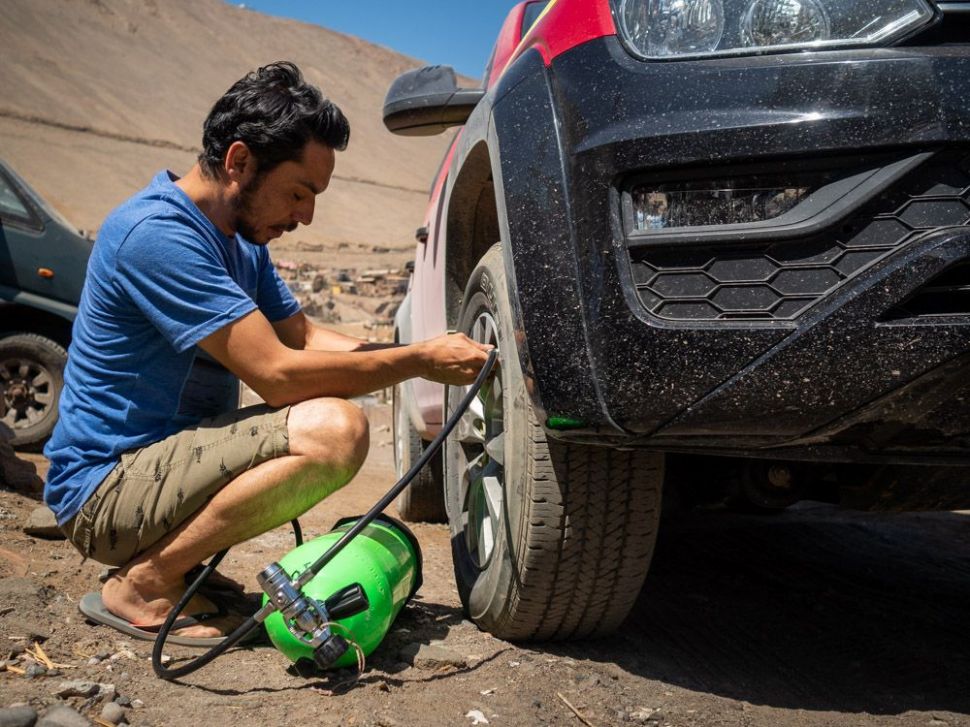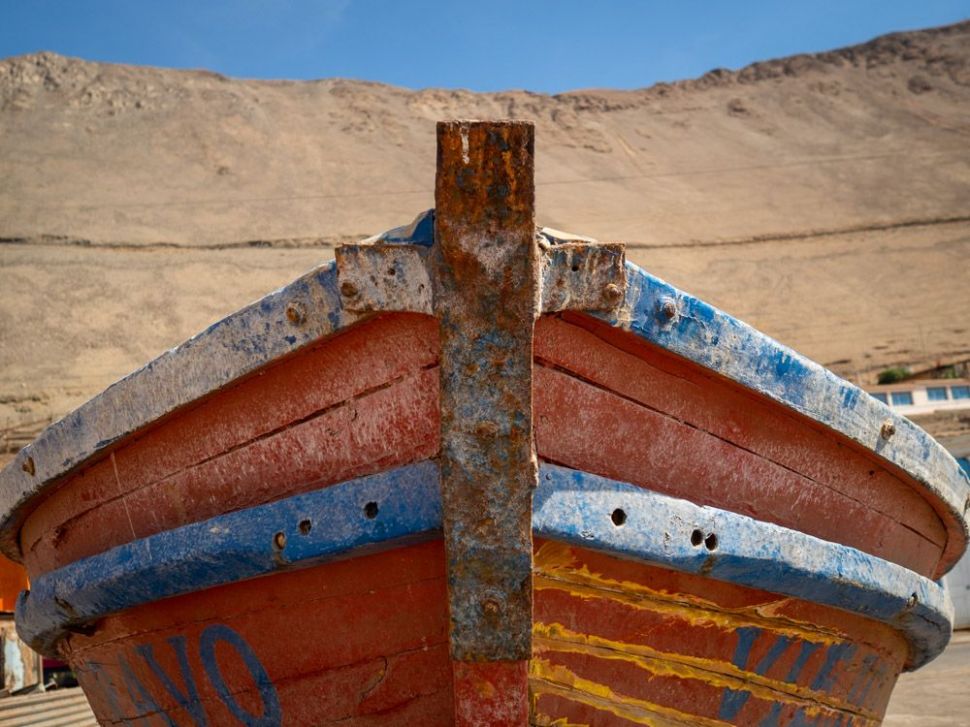Pisagua: Part I
We only know about the tiny town of Pisagua for a scrawny paragraph in our guidebook. We think it might be an interesting and worthwhile stop towards the end of our road trip through Northern Chile. We have a few days before we need to return the truck in Arica, and the guide book made it sound interesting enough. We decide to set aside one night for Pisagua before traveling south to Iquique for fuel. The place witnessed many dark events during Pinochet’s dictatorial rule throughout the 70s and 80s. The guidebook also touts the unique charm of this tiny town, so we decide to check it out.
We drive through a valley funneling towards the sea. The sandy, earthen valley walls tower so far above our heads, I crane my neck to see the sky. Eventually, the dramatic coastline reveals herself in all her intimidating and impressive beauty. Far below us sits a small town, almost the color of the desert herself, save an ancient blue-and-white antique clock tower. Below the clock tower, a peculiar, sickeningly bright yellow building. We later learn this local eyesore contains the new hospital, a stark contrast from the dilapidated town.
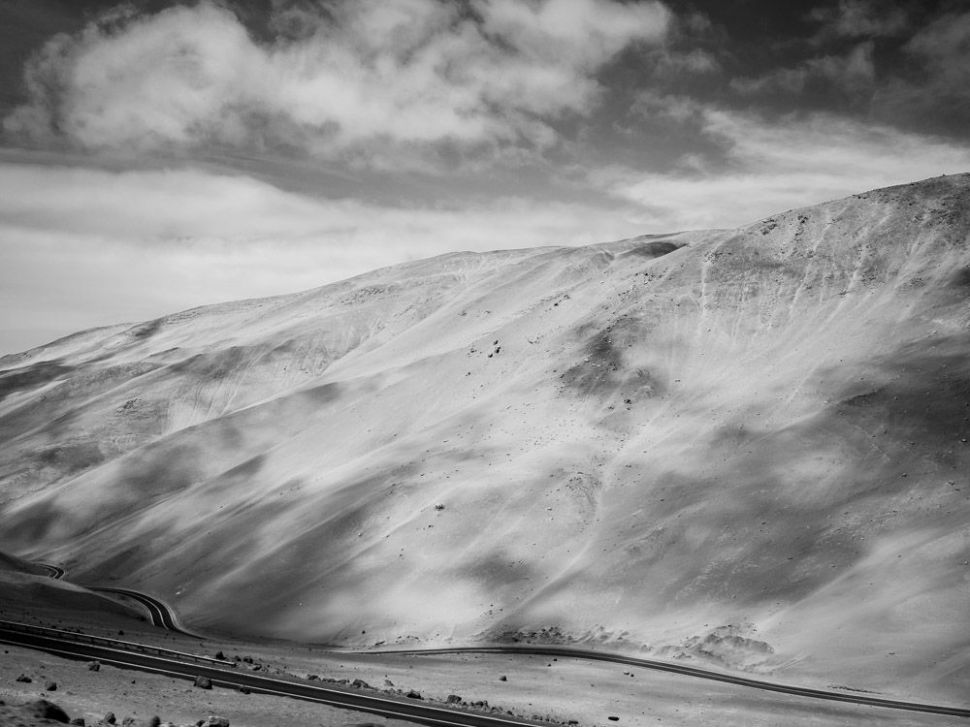
We follow the direction on Lane’s phone through an almost empty main street. Multi-story buildings from the turn of the 20th century with elaborate wooden façades line the road. These structures reflect the former grandeur of Pisagua during the Chilean nitrate boom, quietly but firmly asserting the importance and power the city once held as a jewel of the pacific coast. Now, they only allude to forgotten decades and beauty no longer becoming of the modern world.
Rolling past a few closed restaurants and storefronts, I spot the dirt road leading to our destination. We park on the empty street, unload our bags and venture towards the gate of La Roca, The Rock, the single place to stay in the town and for miles around. I find the name a bit boring, but later I understand the charm when I see part of the hostel built around a protruding rock, big enough to be a landmark in earlier times.
Marcos, the owner, pokes his head from a second story window saying he will be right with us. As he bounds down the stairs with a toothy and genuine smile, he explains the contents of a large aquarium to our left. As we peer the deep green water, we both listen. We each take very different ideas away from the Spanish conversation, so we still have no idea what lurked within the murky, green water. Lane thinks he understood something about vegetarian piranha.
Marcos tells us about both the space and the town as he walks us to an available room. I wonder whether there are actually any other guests. The room includes an ocean view and we thank him and hand over the necessary bills to pay for our stay. He points to the key already waiting in the door, welcomes us again, and reminds us he will only be upstairs should we need anything else.
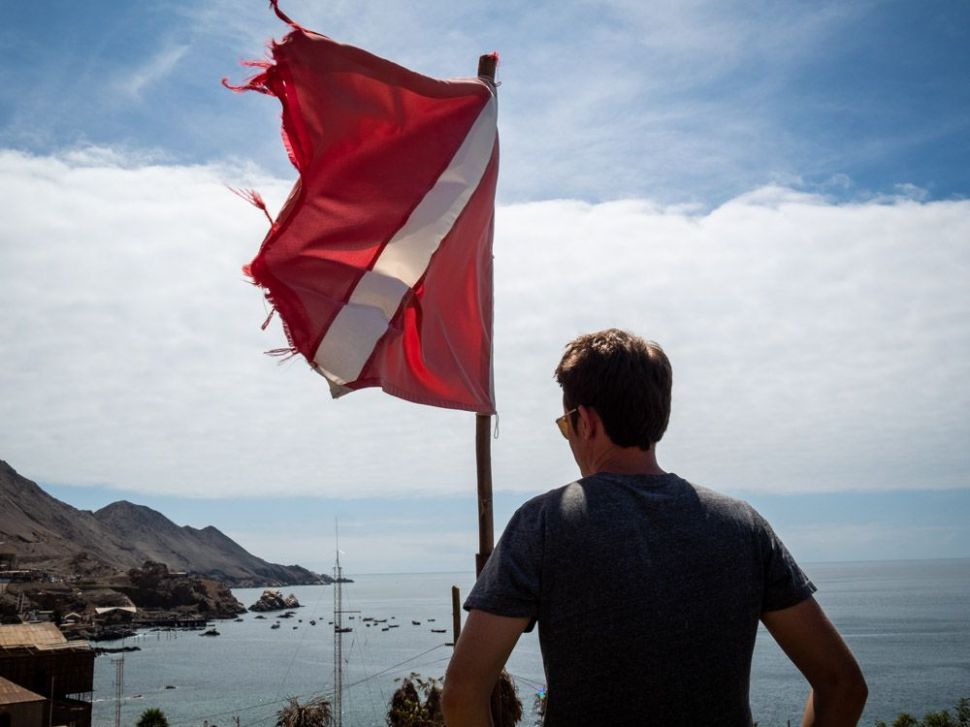
We place our bags in the room and we walk to the creaky deck across from our room and enjoy the view of the ocean. Pisagua sits in a small desert cove, surrounded but the dramatic Chilean coastline. We see the whole town from the vantage point, slightly elevated from most of the remaining buildings. We leave the hostel, headed towards the famous old theater in town. It was built over 100 years ago, and somehow it’s still standing despite the ravages of time. We read in the guide that you can get a key the theater from the police and explore this venue from a era gone by on your own. The young officer in running shorts and a t-shirt, painting the inside of the office a fresh white, tells us the librarian now has the key. A small boy riding his bike outside the library informs us there is wifi right outside the library, but the building itself will not open again until next week. So, no theater visit.
We proceed through town towards a clean yet incomplete boardwalk along the rocky coast, providing a vantage point for spotting sea lions. The quality of the boardwalk surprises us. Considering the population of the town might be about three hundred people on a good day, the boardwalk is new and well-built and seems strangely placed. Throughout the small towns in Northern Chile, we’ve seen many projects like this: public works projects invested in small towns with dreams of the tourists yet to come. I wonder what the locals think of projects like this, or whether they would have liked the money to be used another way. I think it’s a complicated conversation to have in Spanish, so the thought only rattles around in my head.
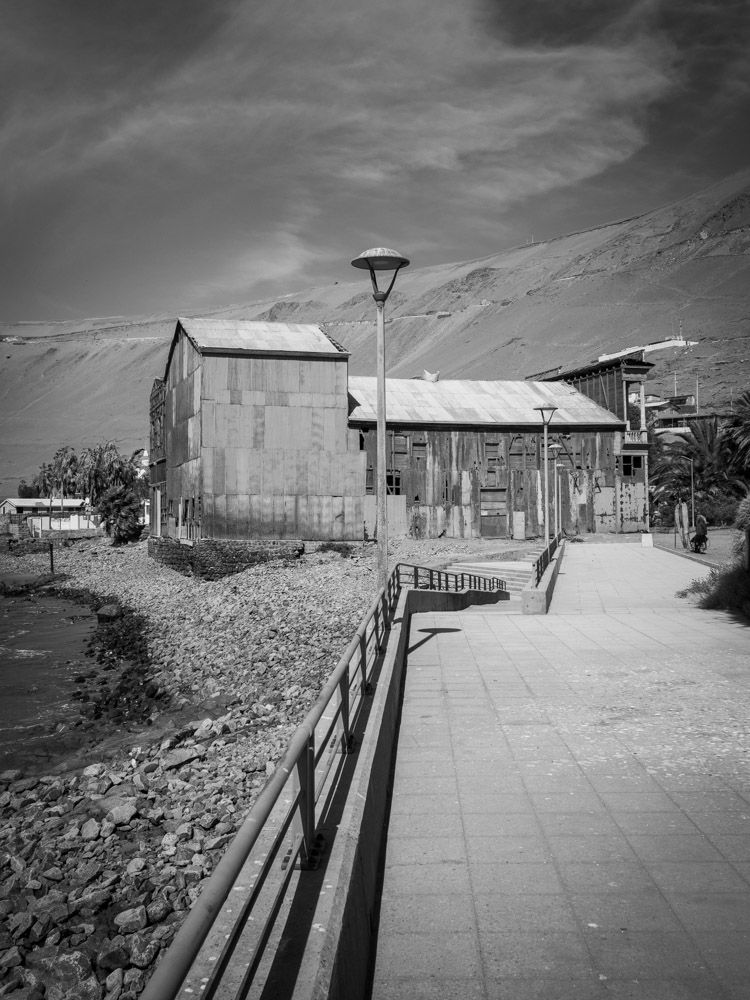
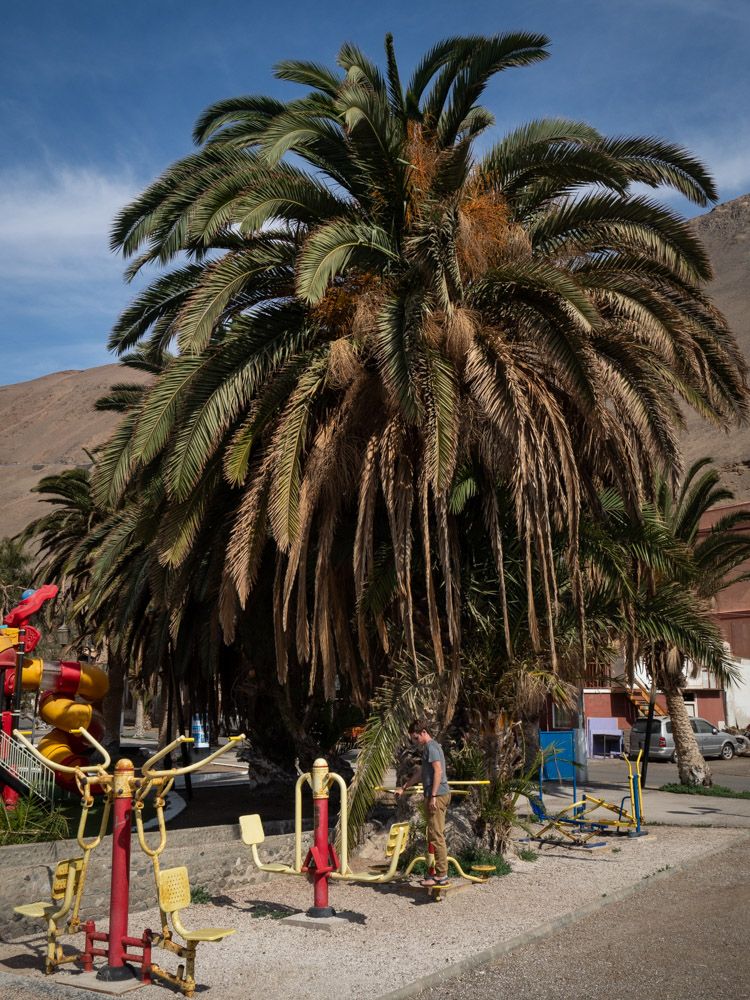
A pack of dogs we will come to recognize rush past us in a barking freezy. A man singing to himself walks around with a full plastic bag, and a Chilean flag flung over his shoulder. We walk past a birthday party, children playing in kiddie pools and slip ‘n slides. The adults stand around laughing, enjoying the music, and don’t mind the presence of two strangers walking through town.
At the end of the boardwalk, we reach stairs lined with the tsunami evacuation route signs pointing up. We climb the stairs, skirting around two small children laughing and chasing one another to the coast. We pause at the overlook at the top of the stairs and search the water’s surface for more marine creatures.
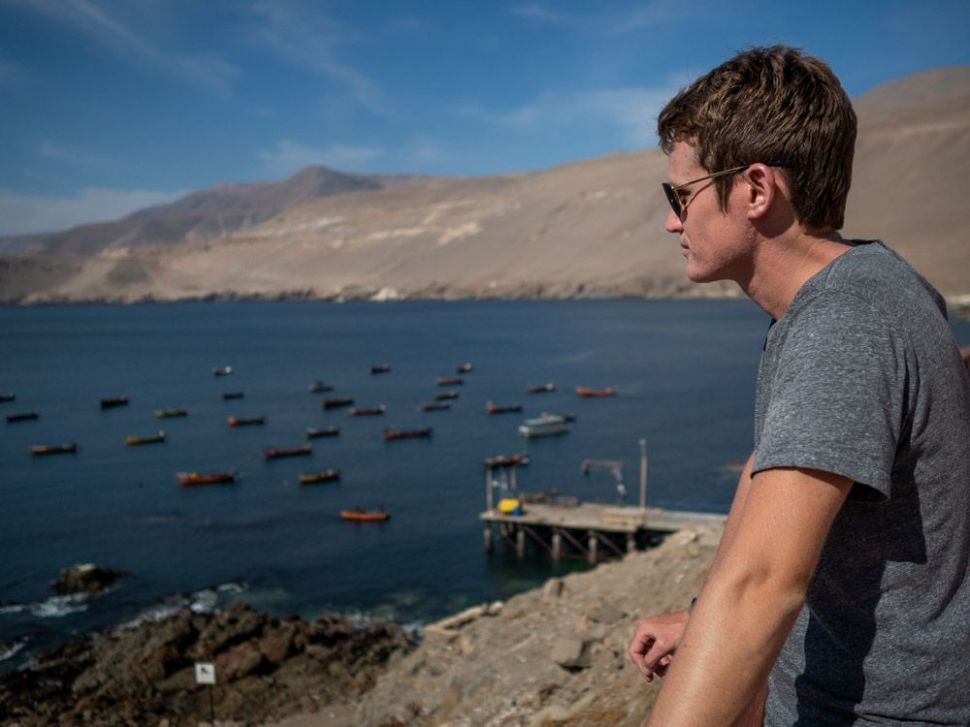
The town narrows as we continue up the coastline hills. In the top corner of the town, past the last occupied houses, we see a large, decaying building, comically slanted to sea. There is no gate preventing our entrance, so we climb the questionable stairs to the even more questionable building. Lane reaches the landing first and reads the faded description mounted on the door. Rather than an official historical plaque, some local student’s school project had been stapled to the weathered door. It’s an abandoned hospital, built in 1906.
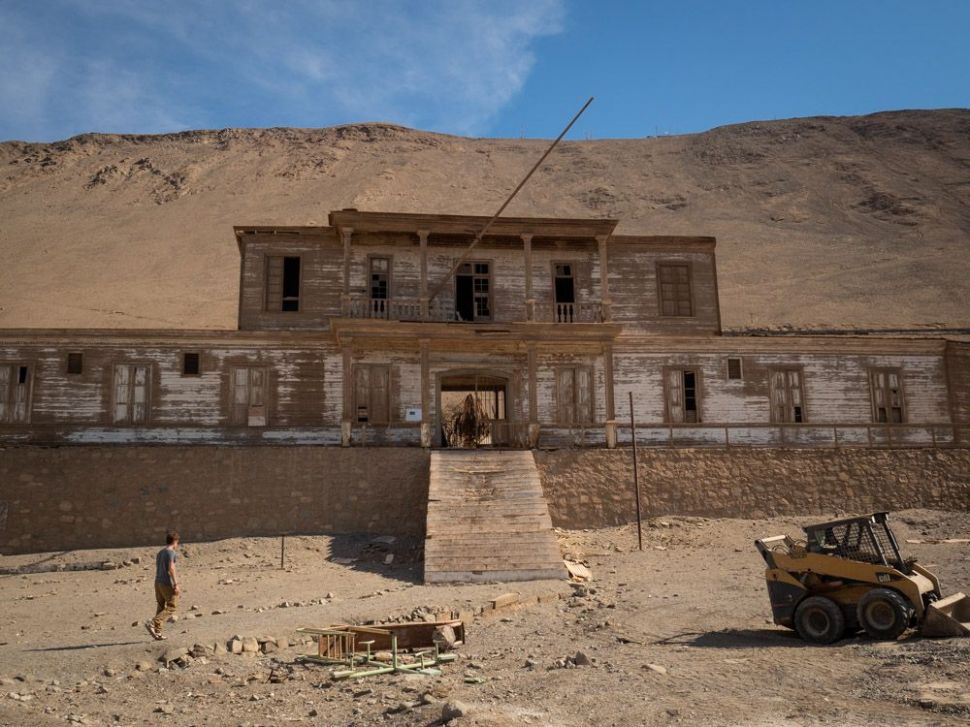
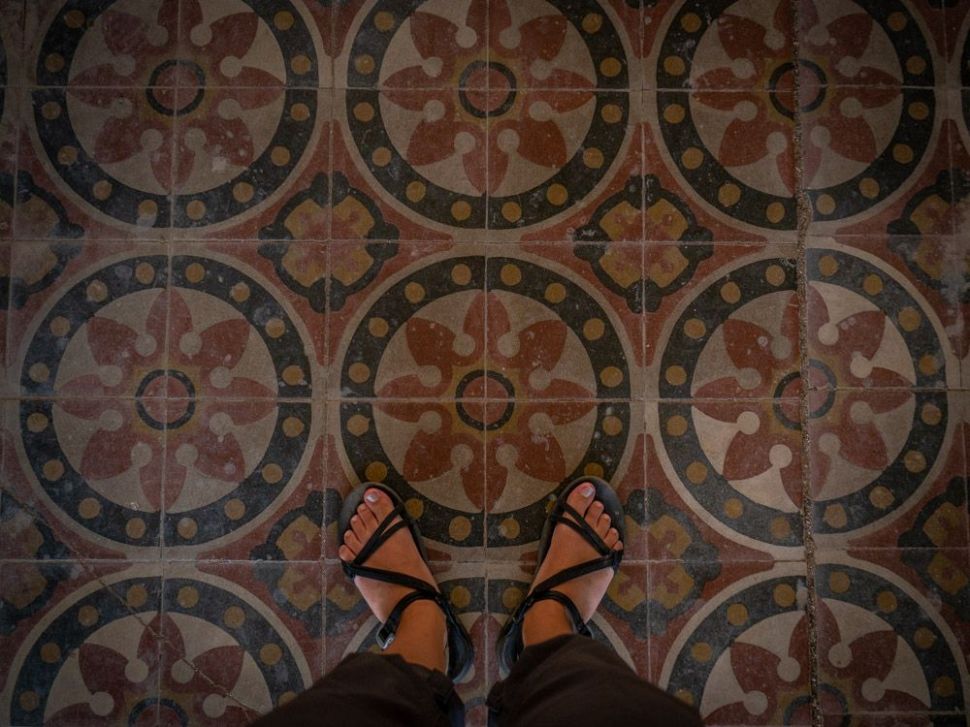
We cross through the gated entrance, revealing large rooms to either side and a small courtyard leading separate small buildings. We enter the smaller structures, always with caution. The rooms are empty, save a few eery details on the wall—evidence of later occupation by squatters and bored teenagers. One wall boasts a collage of old photos. Baby shoes separated from the baby doll hang below a window on another. We pass part of the afternoon walking from room to room, calling out to the other when we see something strange.
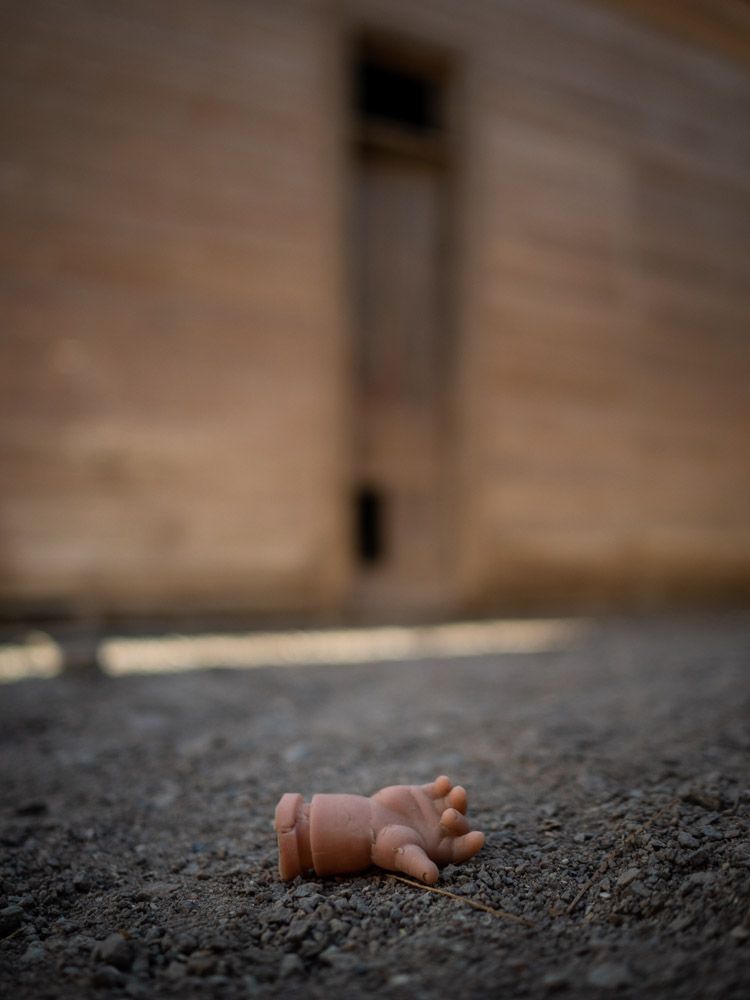
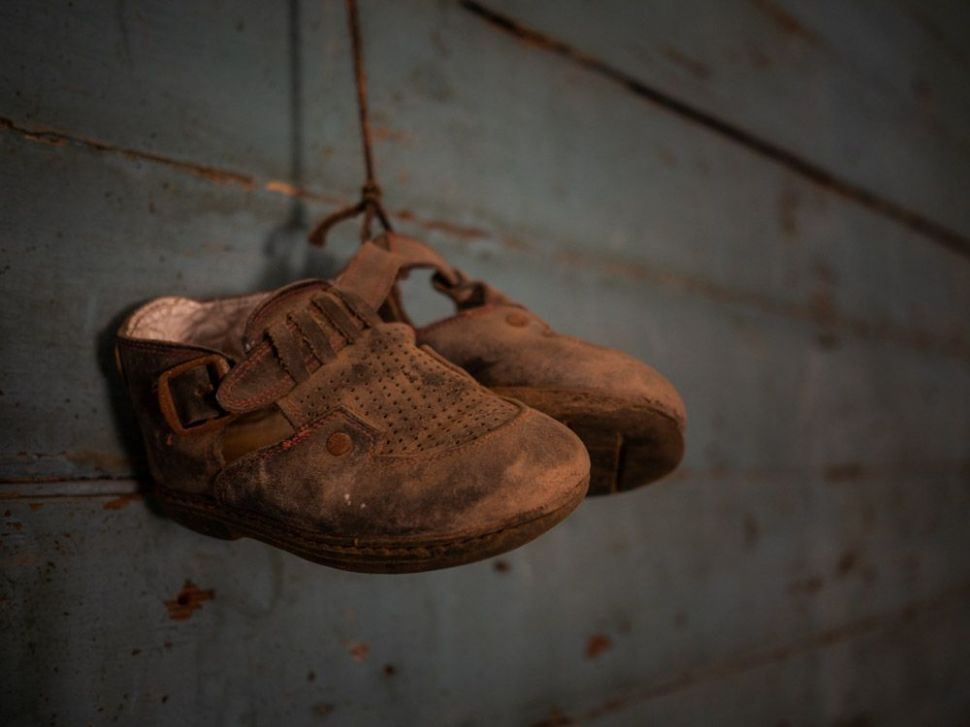
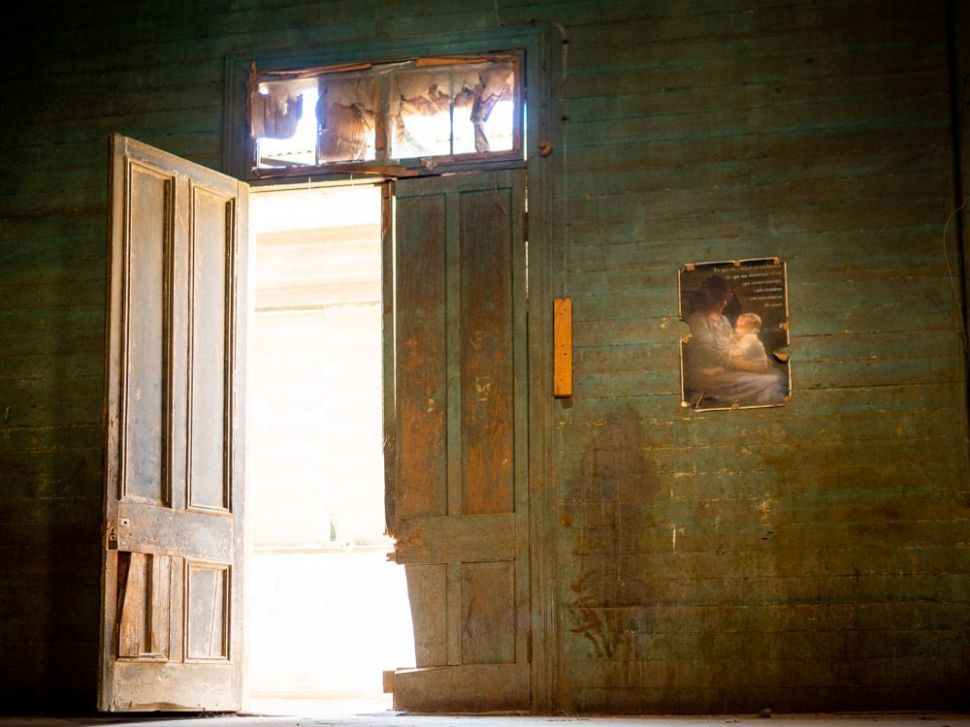
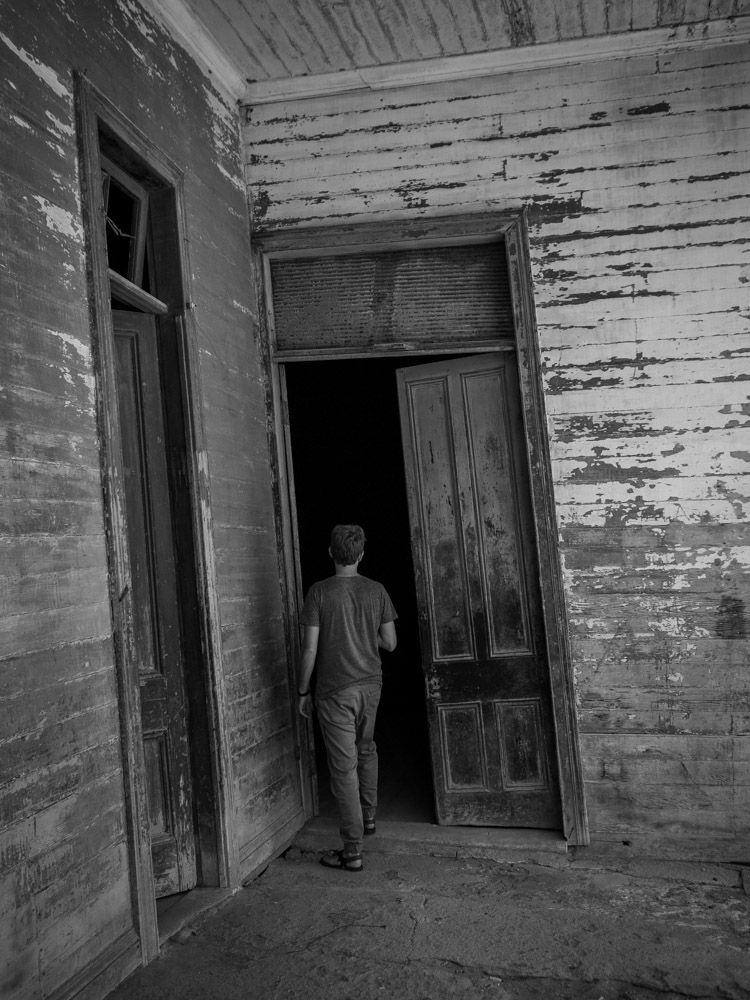
As we step back through the main entrance and towards the ocean, I jump after sensing and seeing a figure to my left. An old man with leathery, desert-worn skin stares beyond the horizon then makes brief eye contact with us before we descend the stairs. We think he may be living there at the moment and had waited patiently for us to leave his home.
We eat dinner at a friendly joint, one of only two open restaurants. The owner, a large woman with a large smile, talks with us and leaves to prepare our food. The giant kitten on her shirt back stares at us as she turns around. The fish is fresh, and the salad refreshing. A line of construction workers from the coastal highway file in. They greet us with smiles and greetings of “buen provecho”, the courtesy given to anyone ever eating in Latin America.
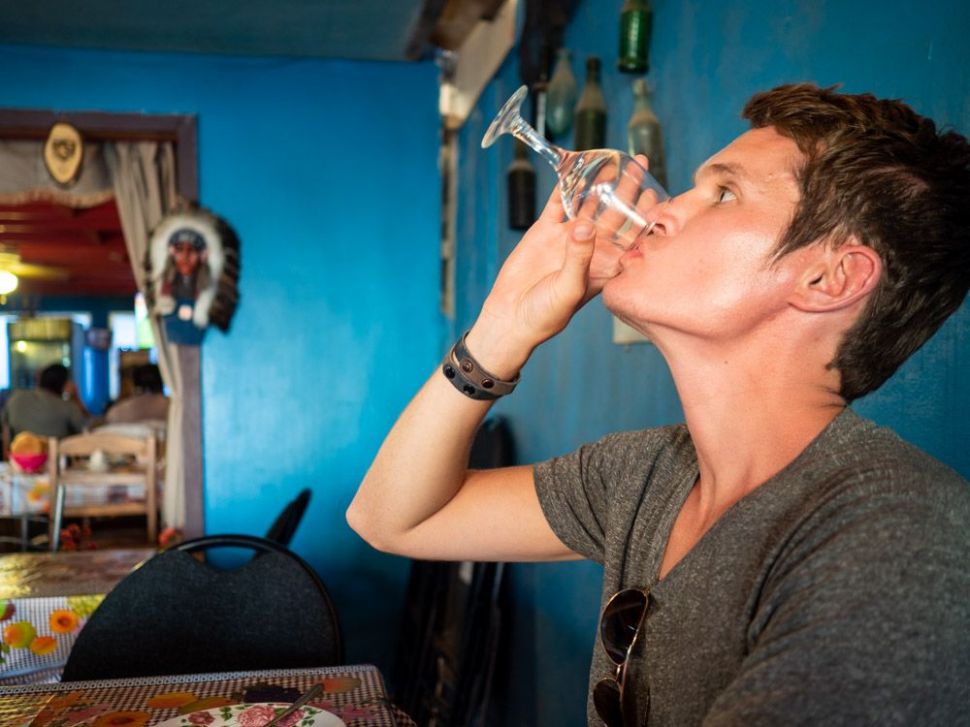
Walking back through town, a truck stops with a rolled down window and asks us if we know what is happening at the theater tonight. At first, I think he means the theater which is currently locked. But he doesn’t. He tells us he’s an actor with a state-sponsored cultural production, and they are hosting a performance at the community center in half an hour.
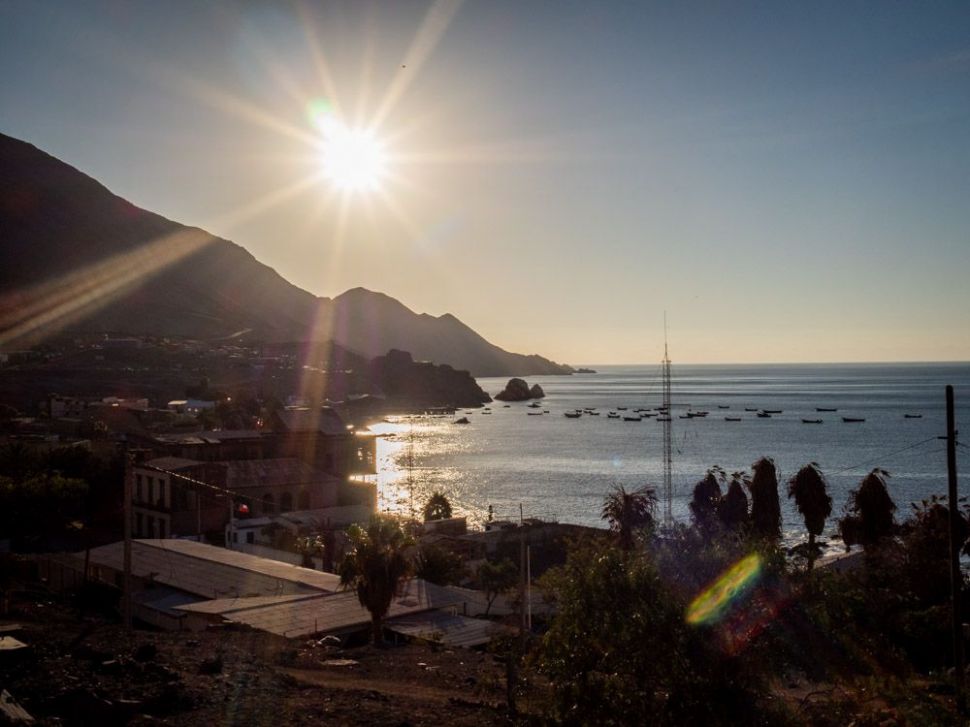
We walk to the theater late that evening. The woman organizing the event spots us in the small crowd and introduces herself, telling us about the governmental efforts to bring art to rural communities in the country. With a smile and chuckle, she asks us why we are in Pisagua, and welcomes us to the show. We find the play to be the most Chilean Spanish we’ve understood, as the theater requires a new level of annunciation and projection. The performance is a one-man show reflecting on the history of Chile told through one family during the nitrate boom and collapse. The actor would later tell us the events are loosely based on his own family.
We talk with the small crew after the show. They ask if we want to take a picture, so we happily oblige. The actor doesn’t think his black shirt with some crazy wolf design is appropriate for a photo with fans, so he prompts whips off his shirt, turns it inside out and then the photos are taken. We compliment the musician on his work as well, and leave the theater.
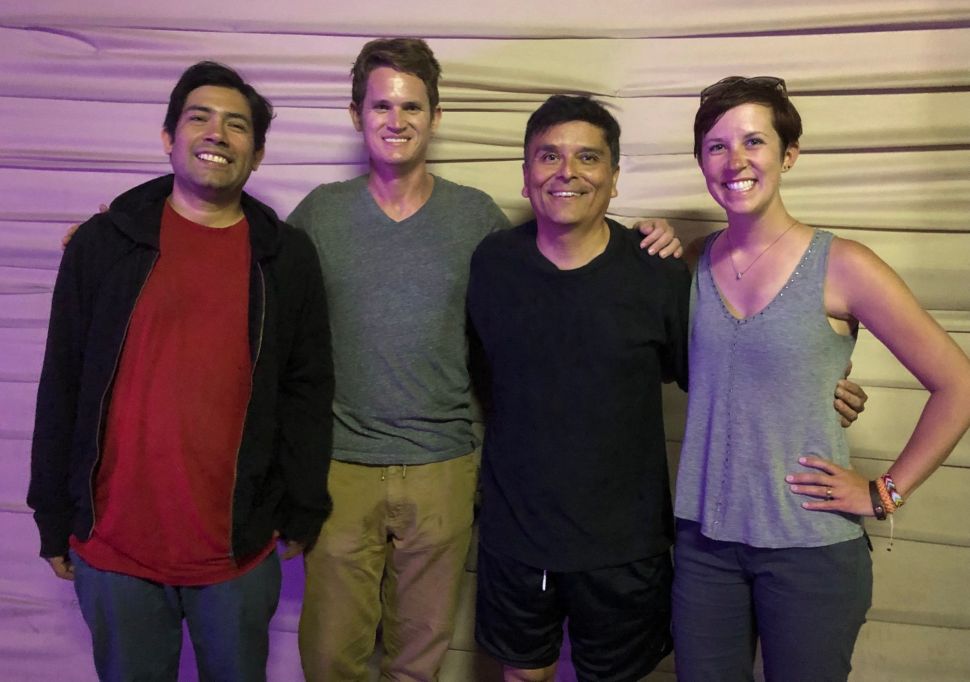
As we return to the hostel, the lights flicker out. Marcos, the owner, explains this is likely due to a few pesky birds. We grab our headlamps and head to deck near our room. We meet Paul and Paulina, a handsome, young couple visiting from Iquique—only about an hour’s drive away. We speak with them in both Spanish and English and we leave them to enjoy their weekend getaway.
The stars are phenomenal, especially now with only a few scarce lights still powered in town. I decide to attempt night photography, and Lane returns to our room, away from the cold sea air. Marcos meets me on the deck and I ask his about how he got here—to this strange and beautiful place apart from the rest of the world. He says he’s from Iquique and moved here five years ago, and it’s a beautiful life living next to the sea. And he enjoys the work of the hostel. We volley a few more questions and responses back and forth before we both decide it’s time to go inside.
The following morning, we wake to a bright sky, and follow a short sidewalk lined with sea shells to the breakfast nook. Marcos serves us a traditional Chilean breakfast—bread, cheese, ham, butter, marmelade, and instant coffee. We cozy up next to the large window facing the ocean and eat contently. Soon, a man in a bright blue polo with a cueball head and round glasses joins us at the table. He speaks easily with Marcos, his warm, friendly smile emanating. His voice is soft, in a warm way. His accent is different and we learn he is originally from Argentina.
We chat easily with Walter, grateful for his easily demeanor and patient with the pace of our questions. We learn Walter travels across Chile with a multitude of antique film cameras, documenting old places and the people living there today. Immediately, I’m fascinated and excitedly ask if I can see some of the cameras. We make plans to do just that after breakfast.
The magic of Pisagua continues collating right in front of me. I sit on the deck writing in my journal. Marcos barrels out of the back door, binoculars in hand, and energetically calls for me to join him. All I catch the first time is something about dolphins, and he passes the binoculars and directs my eye to the pod. We watch them swim and play for quite a while, and they zigzag the bay. I ask questions and he answers. Throughout our stay, I will learn Marcos’s English is spectacular, but he honors our effort in speaking Spanish . Assuredly, it would be faster and less confusing for him to switch to English. Nonetheless, he only does this when I really struggle with a thought, and I appreciate the kindness in the gesture.
Walter joins us on the deck with a giant beauty of a camera. We learn the wooden box he built himself, through the lens is entirely originally. My eyes widen at a pace equal to that of my smile as I admire the craftsmanship. He invites us each to lift the small blanket sitting atop the camera, and peer through the lens. I find this incredibly exciting. I understand I’m simply seeing a blurrier version of the beautiful scenery in front of me, but seeing it through a lens used so long ago, once a pinnacle of technology, makes me smile uncontrollably. At this moment, I wish I knew more exclamations and words of excitement, but my vocabulary is fairly limited there. Walter chuckles at my exclamations in both English and Spanish and well as the crazy smile on my face.
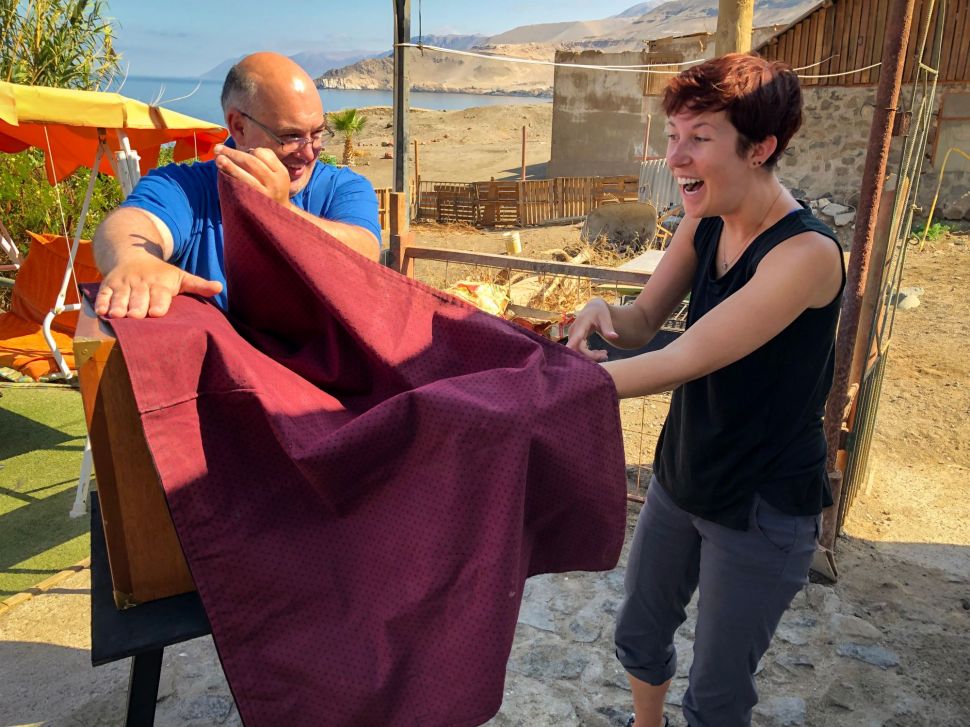
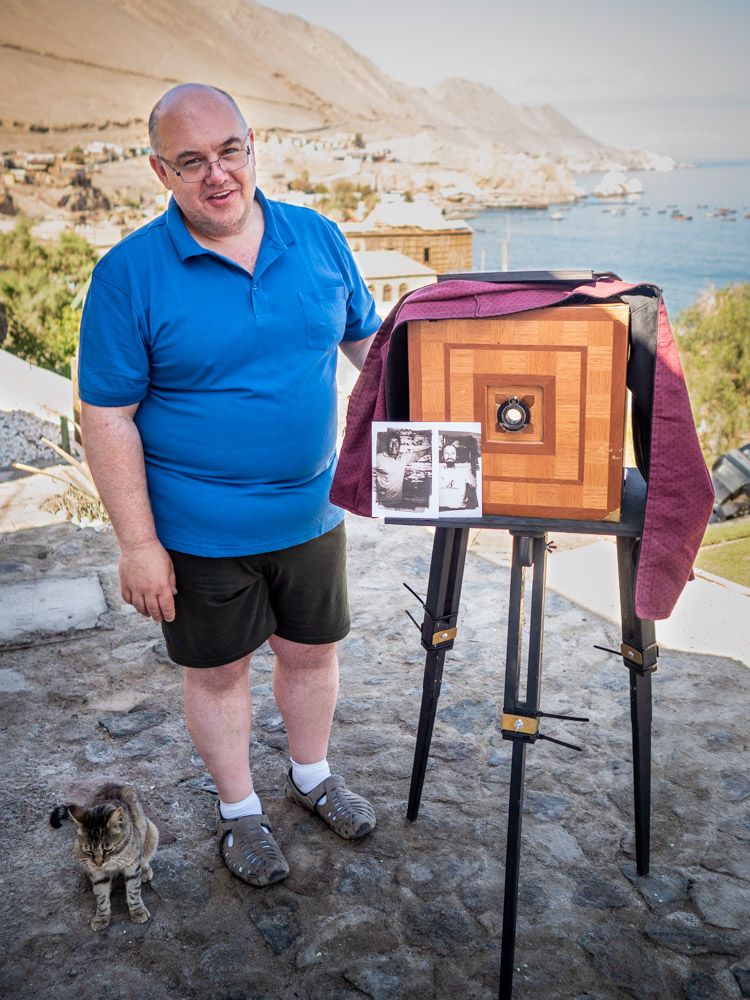
Recalling his process of developing his film we discussed over breakfast, he invites us back to his room to see it in action. Negatives hang from a line stretched wall to wall, and any flat surface is stacked with equipment and cameras. He shows off the dark room is built in the bathroom. A small lamp is strapped to the sink, and a red solo cup is spliced and taped around the lamp to make it red.

He shows us some of his work from Pisagua. We recognize a few buildings, and I marvel at the portraiture. He gives us a copy of one portrait, and scribbles his information of the back of it as well. We continue excitedly chatting, returning to the deck. He checks on two prints currently absorbing sunlight and we watch them come to life. As best I can, I tell him how photography is important to my family, how it was a love of my grandfather’s, how my mom will be excited to see some of these pictures from meeting him and his gallery of ancient cameras.
The morning nows fades into midday and I know we need to return to the road, if only to get more fuel to be able to return the rental truck in two day’s time. Before leaving, I ask Marcos about the scuba diving in the area. When we first arrived, we had no idea the hostel doubled as a dive shop, but the combination further delighted and intrigued me. He assures me the diving is great, some of the best in Chile, and it is the main reason he left Iquique. He tells of the numerous shipwrecks waiting under the surface and the colony of sea lions nearby. The opportunity sounds incredible. I try to sound contemplative and say we may consider returning, though I already know I want to come back without a doubt.
